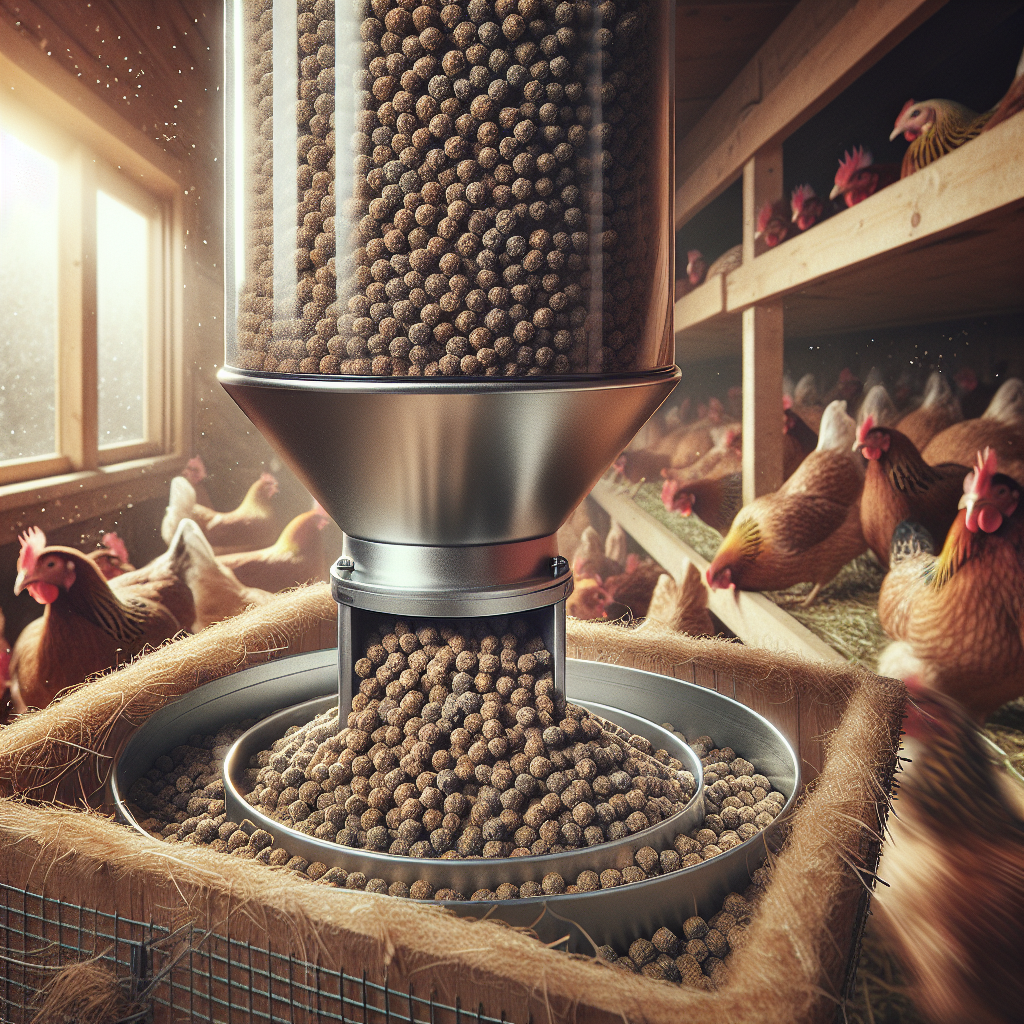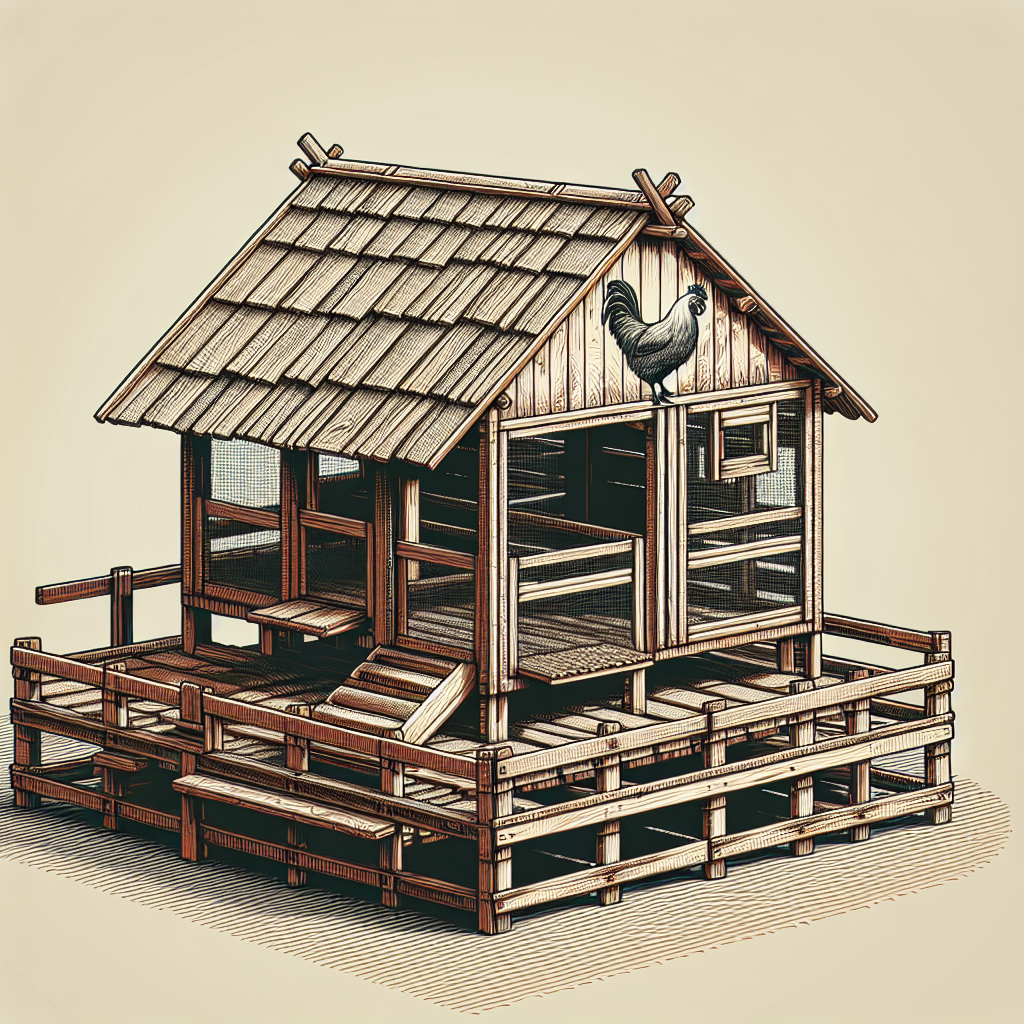If you’re thinking about raising baby chickens or chicks, then you may be wondering if there are any specific considerations when it comes to designing a coop for them. Well, the answer is yes! When it comes to housing these adorable little creatures, there are a few things you need to keep in mind to ensure their safety, comfort, and overall well-being. From providing them with adequate insulation and ventilation to creating a secure and predator-proof environment, designing a coop for baby chickens or chicks requires careful planning and attention to detail. So, let’s explore some of the key factors to consider when creating a cozy and inviting space for your feathered friends!
Size of the coop
Keeping it small for baby chickens
When designing a coop for baby chickens or chicks, it is important to keep the size of the coop relatively small to ensure their safety and comfort. Baby chickens require a smaller space initially as they are more vulnerable and need to be kept close together for warmth and socialization. A small coop will provide them with a sense of security and help in the development of their natural behaviors.
Allowing for growth
While it is essential to keep the coop small initially, it is equally important to plan for the growth of the baby chickens. As they grow, they will require more space to move around and exercise. Therefore, the coop should be designed in a way that allows for expansion or the addition of a run area for the chickens to explore as they mature.
Determining the ideal dimensions
The ideal dimensions for a coop designed for baby chickens or chicks will depend on the number of chickens you plan to keep. As a general rule of thumb, a minimum of 2 square feet of space per chick should be provided. However, it is always better to err on the side of caution and provide a slightly larger space to ensure the overall well-being of the chickens.
Temperature control
Providing adequate insulation
Maintaining an optimal temperature is crucial for the health and development of baby chickens. Proper insulation in the coop will help regulate the temperature and protect the chicks from extreme heat or cold. Insulating materials such as foam boards or fiberglass can be used to line the walls and roof of the coop, reducing heat transfer and keeping the interior temperature stable.
Including a heat source
During the early stages of a chick’s life, they require supplemental heat to compensate for their inability to regulate their body temperature. A heat source such as a heat lamp or a brooder plate should be installed in the coop to provide warmth. The heat source should be adjustable to ensure the chicks have a comfortable and safe environment.
Monitoring temperature levels
Regular monitoring of the temperature within the coop is crucial. A thermometer should be placed inside the coop to keep track of the temperature and adjust the heat source accordingly. It is essential to maintain a temperature of around 95°F (35°C) for the first week, gradually reducing it by 5°F (2.8°C) every week until the chicks are fully feathered.
Ventilation
Ensuring good air circulation
Proper ventilation is essential to maintain good air quality inside the coop for baby chickens. Adequate air circulation helps remove excess moisture, ammonia, and other harmful gases. It also prevents the buildup of dust and dander, ensuring a healthier environment for the chicks. Ventilation can be achieved by adding windows, vents, or using a fan to promote air movement.
Preventing drafts
While ventilation is important, it’s equally crucial to prevent drafts in the coop as they can cause cold stress and respiratory problems in baby chickens. Drafts can be avoided by positioning ventilation openings higher up the walls, using adjustable vents, or employing baffles to redirect air without creating direct drafts on the chickens. Regular inspections should be carried out to ensure there are no cracks or gaps that could contribute to drafts.
Balancing temperature and airflow
Finding the right balance between temperature control and airflow is crucial for the overall comfort and health of baby chickens. Good ventilation helps regulate temperature by removing excess heat during hot weather while preventing stagnant air and condensation during colder months. Balancing airflow can be achieved by strategically placing ventilation openings and ensuring they can be adjusted according to the weather conditions.
Lighting
Providing appropriate light levels
Lighting plays an important role in the development and well-being of baby chickens. Adequate lighting is necessary to ensure proper growth, feed consumption, and overall health. The coop should have enough natural or artificial light to provide a consistent light-dark cycle. Baby chickens require approximately 14-16 hours of light per day initially, gradually reducing to 12-14 hours as they mature.
Simulating natural daylight
Natural daylight is ideal for baby chickens as it provides the necessary spectrum of light that aids in their growth and development. If natural daylight is insufficient, supplemental lighting sources such as LED or fluorescent bulbs can be used to simulate sunlight. It is important to ensure the lighting is evenly distributed throughout the coop to prevent light intensity variations.
Avoiding excessive light exposure
While providing adequate light is important, excessive light exposure can negatively impact the well-being and behavior of baby chickens. Exposure to constant light can lead to restlessness and sleep disruption. It is essential to maintain a consistent light-dark cycle and allow for uninterrupted periods of darkness to promote healthy sleep patterns in the chicks.
Flooring material
Choosing suitable materials
The choice of flooring material in the coop for baby chickens or chicks is crucial for their safety, comfort, and hygiene. The flooring should be easy to clean, non-slip, and resistant to moisture. Common flooring materials include pine shavings, straw, or sand. These materials provide a soft surface for the chicks to walk on and absorb moisture effectively.
Ensuring traction and cleanliness
Baby chickens are prone to leg and foot injuries, so it is important to ensure the flooring provides adequate traction to prevent slipping. Regular cleaning and maintenance of the coop floor are crucial to prevent the accumulation of droppings, which can lead to bacterial growth and disease. Keep in mind that flooring materials should be changed regularly as chicks grow to maintain cleanliness and hygiene.
Preventing injury and disease
The coop flooring should be designed to minimize the risk of injury and disease for baby chickens. Avoid using materials such as concrete or wire mesh, as they can cause foot injuries or bumblefoot. Regularly inspect the flooring for any sharp objects or debris that may harm the chicks. Maintaining a clean and dry floor will help prevent the growth of bacteria and other pathogens that can lead to disease.
Roosting and perching
Installing appropriate roosts
Providing roosting areas is essential for baby chickens to develop their natural behavior and promote healthy development. Roosts can be made from sturdy branches or wooden dowels attached horizontally to the walls of the coop. The roosts should be designed with a rounded shape to minimize pressure points on the chickens’ feet.
Considering size and height
The size and height of the roosts should be suitable for baby chickens. The roosting area should be wide enough to accommodate the chicks comfortably, allowing them to rest side by side. The height of the roosts should be low enough for easy access but also high enough to prevent contact with droppings on the coop floor.
Promoting natural behavior
Roosting and perching are natural behaviors for chickens, and providing appropriate roosts encourages these behaviors from a young age. Roosting allows the chicks to rest, sleep, and feel secure off the ground. It also helps in the development of their leg muscles and balance. By promoting natural behavior, baby chickens will grow up to be healthier and happier adult chickens.
Nest boxes
Determining the number needed
Nest boxes are essential in the coop to provide private and cozy spaces for baby chickens to lay their eggs when they reach maturity. The number of nest boxes required depends on the number of chickens. As a general guideline, one nest box should be provided for every 3-4 chickens. This ensures that every chicken has access to a nesting space without overcrowding.
Providing cozy and private spaces
Nest boxes should be designed to provide a comfortable and private environment for baby chickens to lay their eggs. They should be dark, quiet, and well-ventilated. Adding a layer of straw or shavings to the nest boxes not only provides insulation but also creates a cozy and inviting space for the chickens to lay their eggs.
Creating easy access for young chicks
When designing nest boxes for baby chickens, it is important to consider easy access for the young chicks. The entrance to the nest boxes should be low enough to allow the chicks to enter effortlessly as they grow. Providing a small ramp or ladder leading to the entrance can facilitate their entry and minimize the risk of injury.
Feeders and waterers
Choosing appropriate sizes
When selecting feeders and waterers for baby chickens, it is important to choose sizes that are suitable for their age and number. Small feeders and waterers, specifically designed for chicks, should be used initially to ensure easy access and prevent wastage. As the chicks grow, larger feeders and waterers can be introduced to accommodate their increasing needs.
Ensuring easy access for chicks
Baby chickens should have easy access to feeders and waterers to encourage proper feeding and hydration. The height of the feeders and waterers should be suitable for the chicks, allowing them to reach without straining. Placing feeders and waterers near the ground or on stable platforms will make it easier for the chicks to access their food and water.
Implementing hygienic practices
Cleanliness and hygiene are crucial when it comes to feeders and waterers for baby chickens. These should be cleaned regularly, ideally daily, to remove any leftover feed, droppings, or debris. Dirty feeders and waterers can become breeding grounds for bacteria and parasites, potentially leading to disease outbreaks. Implementing hygienic practices will help maintain the health and well-being of the baby chickens.
Security and predator protection
Choosing sturdy materials
The coop should be constructed using sturdy materials to ensure the safety and protection of baby chickens from predators. Predators such as raccoons, foxes, and snakes can pose a threat to the chicks, so the coop should be built with solid walls and a secure roof to deter any potential predators from gaining access.
Including appropriate fencing
A strong and secure fence is essential to keep predators out and prevent the baby chickens from wandering off. The fence should be buried at least 6 inches deep to deter digging predators and should be tall enough to prevent predators from climbing over. Regular inspections of the fence should be carried out to ensure there are no gaps or weak spots.
Implementing deterrents against predators
In addition to secure fencing, it is important to implement deterrents that discourage predators from approaching the coop. This can include motion sensor lights, noise alarms, or even the presence of guard animals such as dogs or geese. These measures will help protect the baby chickens and provide you with peace of mind.
Socialization and suitable companions
Providing enough space for interaction
Baby chickens thrive on social interaction, and providing enough space in the coop is essential to allow for socialization. The coop should be designed with enough room for the chicks to move around freely and engage with one another. This space promotes healthy social behaviors and reduces the risk of aggression or stress induced by overcrowding.
Fostering positive social behavior
Creating a positive social environment in the coop is important for the well-being and development of baby chickens. This can be achieved by ensuring a balanced sex ratio and introducing chicks of similar ages together. Regular handling and gentle interaction with the baby chickens will also help them become more comfortable with human presence.
Introducing compatible companions
Baby chickens benefit greatly from the companionship of their flock members. When selecting companions for the chicks, it is important to choose birds of similar age and size to minimize potential bullying or aggression. Introducing chicks from different sources gradually and under supervision will help them integrate into the existing flock more successfully.
In conclusion, designing a coop specifically for baby chickens or chicks requires careful consideration of their unique needs. From the size of the coop to temperature control, ventilation, lighting, flooring material, roosting areas, nest boxes, feeders, waterers, security, and socialization, each aspect plays a crucial role in providing a safe, comfortable, and healthy environment for the baby chickens to thrive and grow into happy and productive adult chickens. By following these guidelines and understanding the specific requirements of baby chickens, you can design a coop that meets their needs and ensures their well-being from the moment they hatch.




